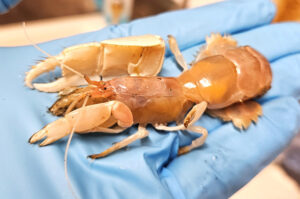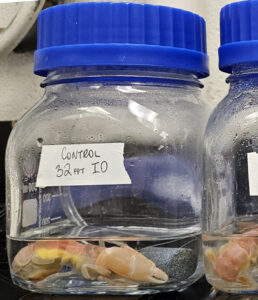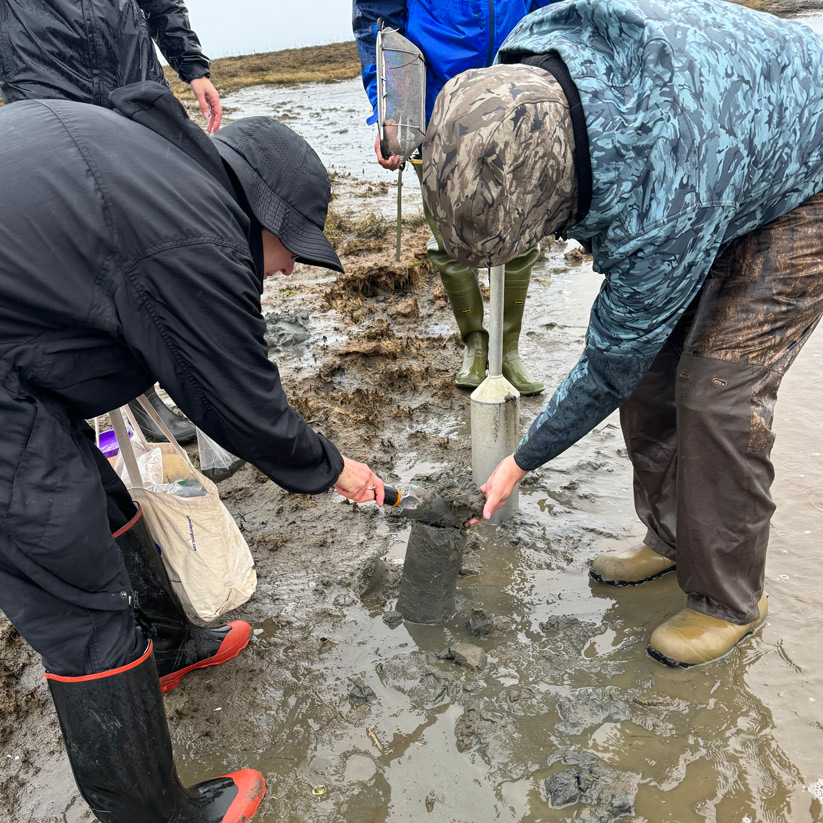Burrowing Shrimp
Control of Burrowing Shrimp (Ghost Shrimp and Mud Shrimp)
Neotrypaea californiensis (AKA burrowing shrimp, ghost shrimp, and mud shrimp) have been pinching oyster farmers in Washington State for decades, and Invasive Species Corporation is working to find a bio-based solution. When these shrimp overpopulate tideflats and oysterbeds, their fastidious burrowing behavior turns the sediment to quicksand that sucks oysters and other sediment dwellers beneath the silty surface.
Washington state has banned the chemical pesticides farmers used in the past to control burrowing shrimp due to their harmful off-target effects in the state’s precious coastal and estuarine ecosystems, fueling demand for a new, highly specific, and environmentally responsible control strategy. The Washington State Department of Agriculture knew who to turn to for that assignment.

ISC has conducted two sampling trips to Willapa Bay in Washington with support from the state’s Department of Agriculture (WSDA), the local Shoalwater Bay Tribe, the Willapa-Gray’s Harbor Oyster Grower’s Association (including Director David Beugli and members Kathleen Nisbet-Moncy of Goose Point Oysters and Brian and Jeb Sheldon of Northern Oyster Co.), and Dr. Kim Patten of Washington State University. ISC’s team collected shrimp and environmental samples from affected areas while intermittently losing their boots and their dignity while trudging through the liquified sediment.

From these samples, ISC scientists isolated over 1,200 microorganisms. They developed three bioassays in as many months (two based around model systems and one using live, adult burrowing shrimp) and selected microbes for those bioassays with cutting-edge sequencing and data mining techniques that helped determine which would be most likely to produce a molecule with activity against the burrowing shrimp. In one year of sending thoughtfully-selected microbial extracts through our in-house bioassay pipeline, ISC discovered four extracts that show strong activity against burrowing shrimp.
On top of continued screening for more microorganisms with activity against burrowing shrimp, these extracts are being advanced in ISC’s development pipeline. That starts with steps like ecotoxicology testing, analytical chemistry, and fermentation development, and ends with effective burrowing shrimp control and more oyster farming in Washington state!
ISC is partnering with IPMWG to solve the shrimp invasion responsibly:
